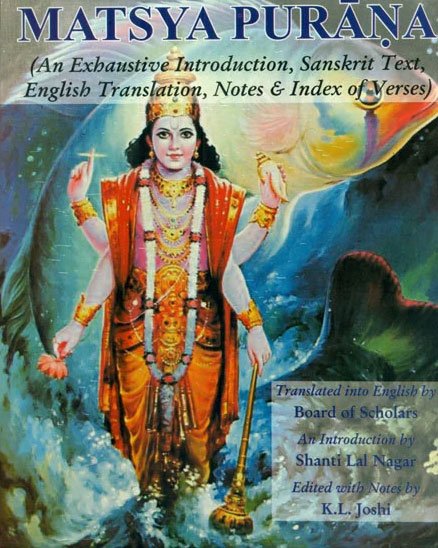The Matsya Purana (critical study)
by Kushal Kalita | 2018 | 74,766 words | ISBN-13: 9788171103058
This page relates ‘Samkhya theory of Causation’ of the English study on the Matsya-purana: a Sanskrit text preserving ancient Indian traditions and legends written in over 14,000 metrical verses. In this study, the background and content of the Matsyapurana is outlined against the cultural history of ancient India in terms of religion, politics, geography and architectural aspects. It shows how the encyclopedic character causes the text to deal with almost all the aspects of human civilization.
Part 2.1 - Sāṃkhya theory of Causation
It has already been mentioned that according to the Sāṃkhyas, Prakṛti is the ultimate cause of the material world. They believe in Satkāryavāda, according to which, the effect exists in its material cause in an unmanifest form even before its production. The Sāṃkhyas uphold that the effect is not a new one, but only a manifestation of that which remains in a talent form in its cause.[1] The effects are the transformations (pariṇāma) of the cause. Hence, all material effects are modifications or transformation of Prakṛti. The first product of Prakṛti is mahat or buddhi (intellect). From mahat is produced ahaṃkāra.[2]
Ahaṃkāra is of three types depending on the guṇas, viz.,
From sāttvika ahaṃkāra are produced the eleven organs. These are the five cognitive organs, the five motor organs and the mind.
These are five cognitive organs are:
- ear,
- skin,
- eye,
- tongue and
- nose,
While the five motor organs are:
- speech,
- hands,
- feet,
- organs of exertion and
- procreation.
Again from the tāmasika ahaṃkāra the five subtle elements (tanmātrās) are produced.[3]
The five tanmātrās are:
From the tanmātrās arise five mahābhūtas, viz.,
The Sāṃkhya philosophy holds that evolution is the play of these twenty four principles. According to them, evolution starts, when the equilibrium of the guṇas is disturbed. Puruṣa is the twenty fifth principle, which is conscious but inactive. When Prakṛti comes in contact with the Puruṣa, the equilibrium of guṇas is disturbed and evolution starts. It is said in the Sāṃkhyakārikā that Prakṛti and Puruṣa come in contact with each other, as Prakṛti requires to be seen (known) by the Puruṣa and the Puruṣa needs to attain liberation.[5] Prakṛti being unconscious, is blind without the help of the Puruṣa. Similarly Puruṣa without Prakṛti is lame, it being inactive.[6] If there is no contact between them, there is no evolution. However, the Sāṃkhya philosophy holds that Prakṛti is independent, and there is no third principle to bring about the contact of the two. The Sāṃkhyas do not accept the existence of God.
Footnotes and references:
[1]:
Ibid., 9
[2]:
prakṛtermahāṃstato’haṃkāraḥ/ Ibid., 22
[3]:
Ibid., 24-25
[4]:
Ibid,, 22
[5]:
puruṣasya darśanārthaṃ kaivalyārthaṃ tathā pradhānasya/ Ibid., 21
[6]:
Ibid.
